11 Vintage Tins That Can Still Be Found in Antique Shops
When strolling through an antique shop, vintage tins are often hidden gems waiting to be discovered. These timeless pieces are a reminder of a bygone era, offering both function and beauty. Each tin has a story to tell, from the company that produced it to the purpose it once served. If you enjoy collecting unique items, vintage tins are definitely worth adding to your collection.
This post may contain affiliate links, which helps keep this content free. Please read our disclosure for more info.
Mazawattee Tea Tin
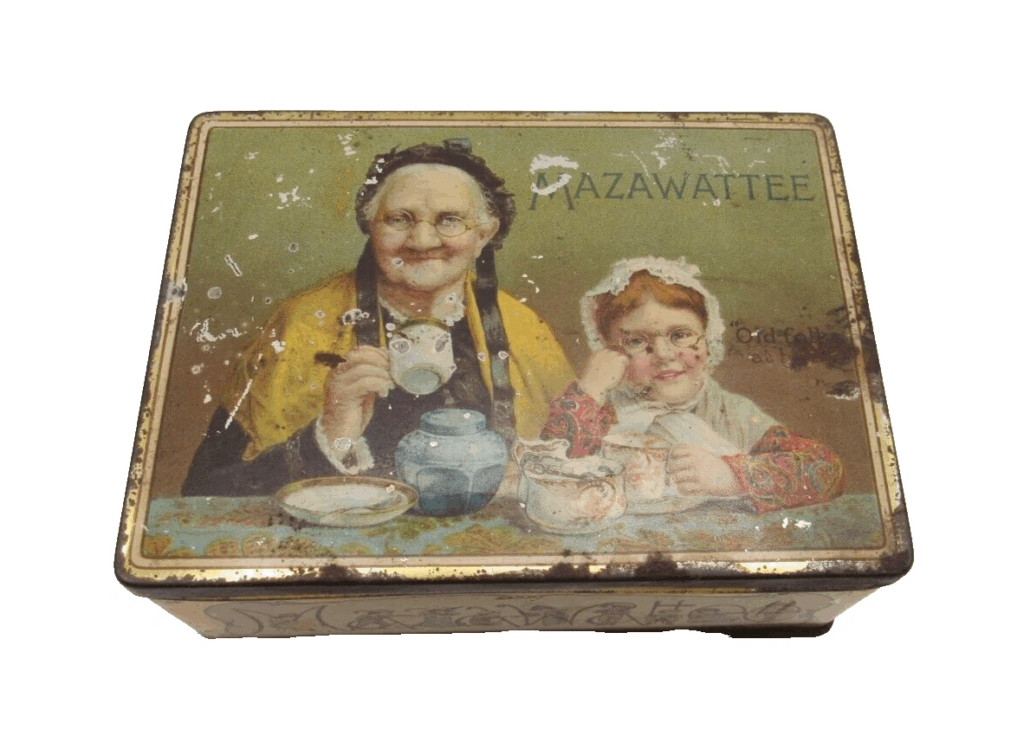
Mazawattee Tea produced their decorative tins starting in the late 1800s. These tins often featured intricate artwork and colorful designs that stood out on store shelves. The tins were used to store tea while also attracting customers with their visual appeal. Depending on condition and rarity, collectors may pay between $30 and $100 for a Mazawattee tin. Original labels and intact lids increase the value and desirability of each piece.
Collectors enjoy Mazawattee tins because they capture a piece of tea history and Victorian design. Many tins display scenes or typography unique to the period, which makes them visually interesting. The tins are usually made from tinplate, which has helped preserve them over the decades. Even minor scratches or fading do not completely diminish their appeal. Antique enthusiasts often display them as decorative pieces or store small items inside.
Swee-Touch-Nee Tea Tin
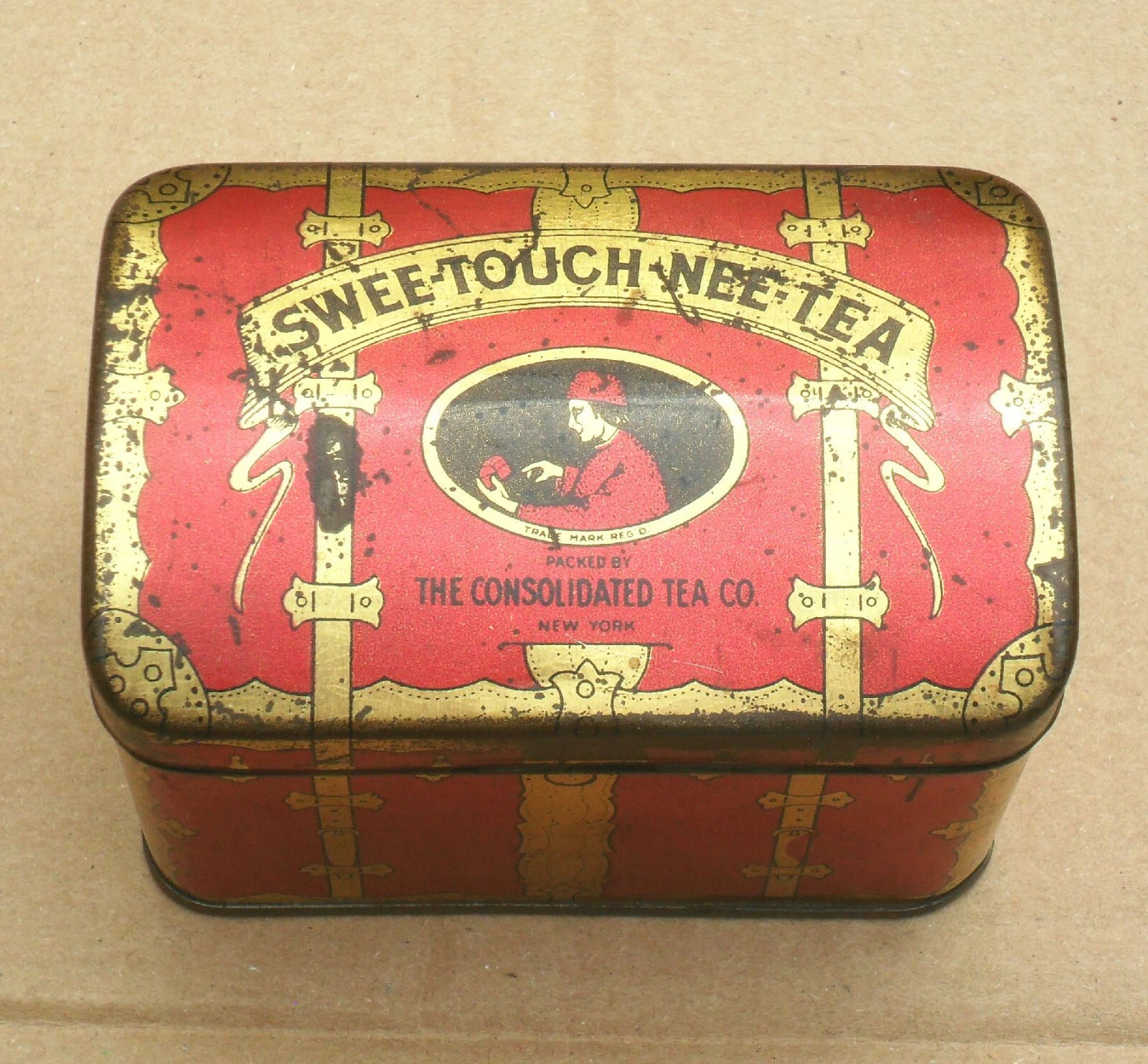
Swee-Touch-Nee Tea began producing collectible tins around 1880 in New York. Some of the earliest designs featured Cyrillic script or distinctive graphics that represented the company’s heritage. These tins were originally used to store tea and protect its flavor and aroma. Depending on age and condition, Swee-Touch-Nee tins can range from $50 to $150. The tin’s bright designs and historical context make it popular with collectors.
The company’s tins are prized because they reflect both the cultural background and business history of Jewish-owned tea enterprises. Many of the vintage tins are small enough to display on shelves or in cabinets. Even worn examples maintain value due to their rarity and charm. Collectors appreciate the balance of practical storage and decorative appeal. These tins often serve as conversation pieces for anyone exploring antique collections.
Artstyle Chocolates Tin
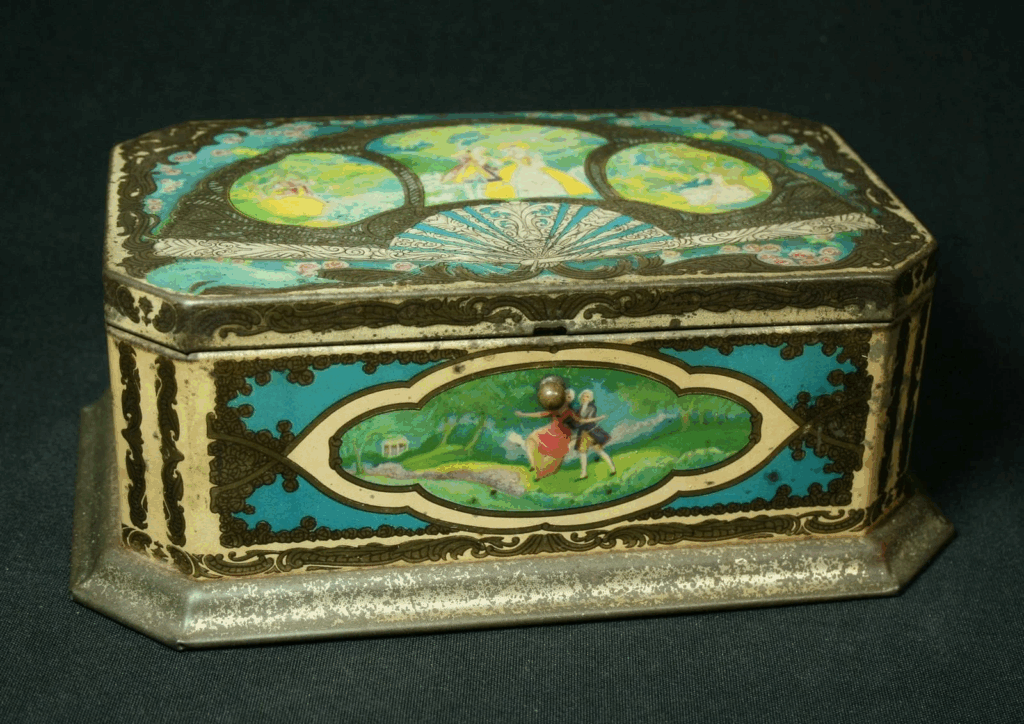
Artstyle Chocolates, based in Boston and St. Louis, produced decorative tins during the early 1900s. The tins often feature Art Nouveau-inspired designs with elaborate patterns and illustrations. They were designed to store chocolates while promoting the brand. Depending on condition, these tins can be valued from $30 to $80. Collectors often look for original graphics that have not faded over time.
These tins are sought after for their artistic and historical value. They demonstrate the decorative style that was popular for candy packaging in the early 20th century. Many examples include embossed details that enhance the design. Even small scratches do not fully reduce their appeal to collectors. Displaying these tins adds both charm and history to a collection.
Peek Freans Biscuit Tin
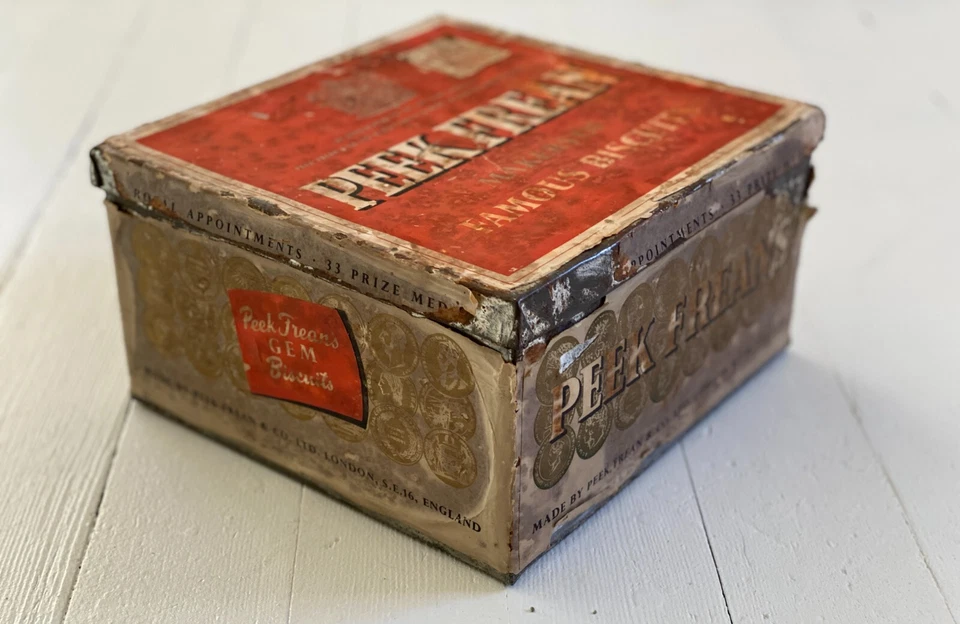
Peek Freans, a British biscuit company, produced decorative tins during the 1900s. The tins were often printed with elaborate graphics and illustrations. These tins were originally used to store biscuits and keep them fresh. Depending on condition and rarity, collectors may pay $30 to $100. Some tins feature embossed designs or foil detailing that adds to their charm.
Collectors appreciate Peek Freans tins for their craftsmanship and historical value. Many tins showcase early advertising styles from Britain. Even worn examples can maintain visual appeal if the main design is intact. These tins are often displayed in collections or used as decorative storage. Their combination of practical use and artistic design makes them timeless pieces.
Cracker Jack Tin
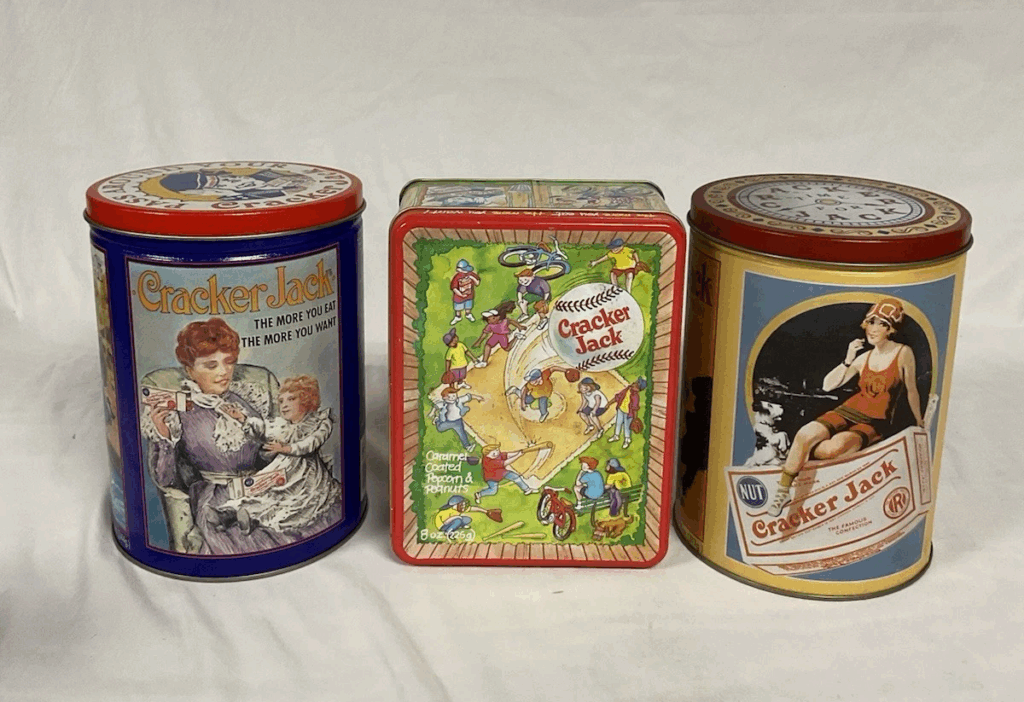
Cracker Jack produced collectible tins in the early 1900s for their caramel popcorn and peanuts. These tins usually have colorful designs featuring circus or carnival themes. They were originally used as promotional items and for storing the product. Depending on condition, these vintage tins can sell for $20 to $60. Some rare editions are especially valuable to collectors.
Collectors enjoy Cracker Jack tins for their nostalgic appeal. The designs often include playful illustrations of children or performers. Even small dents do not remove the collectible value if the artwork is clear. They are commonly displayed in kitchens or on shelves. Cracker Jack tins are considered a fun and historic addition to antique collections.
Ritz Crackers Tin
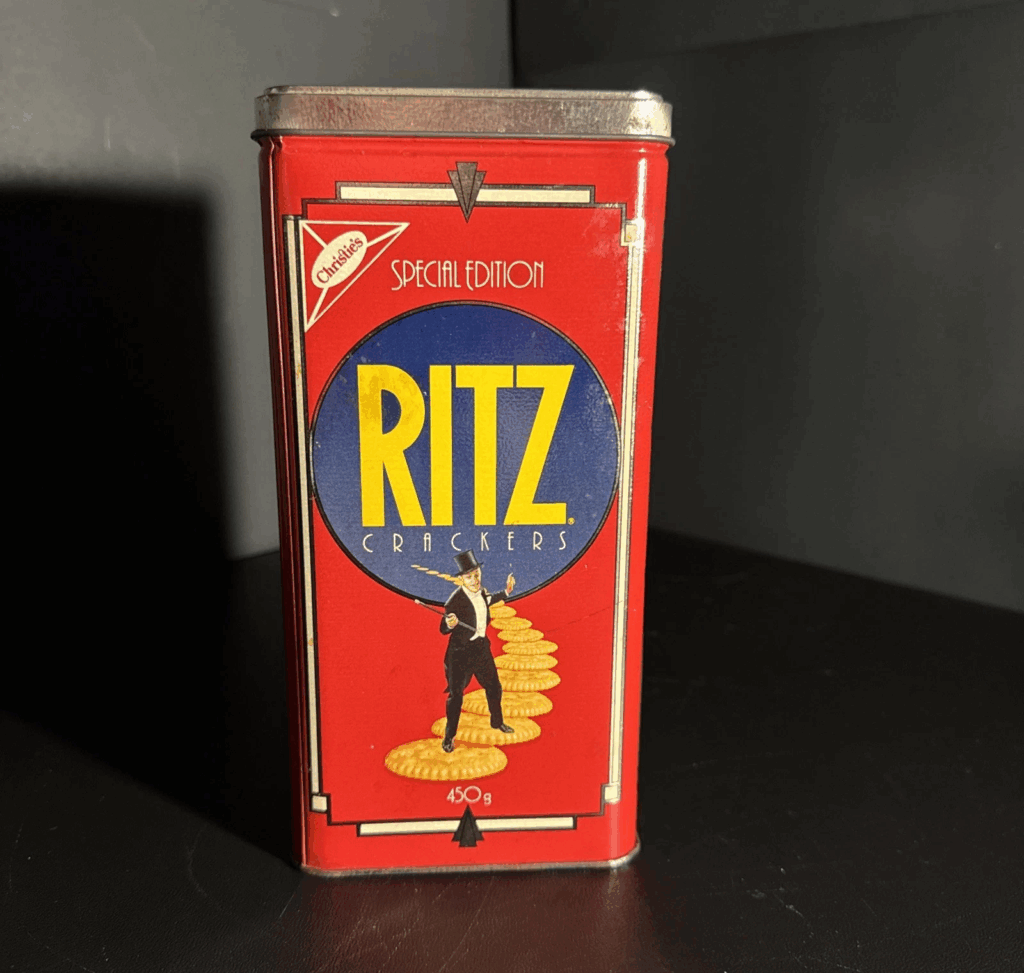
Ritz Crackers produced metal tins during the mid-1900s for promotional purposes. The tins often feature the classic Ritz logo with bright colors and bold lettering. They were used to store crackers and promote brand recognition. Vintage Ritz tins can range in value from $25 to $75. Original, unopened examples tend to command higher prices.
Collectors seek these tins because they represent mid-century snack packaging. The tins are made from durable metal that preserves the graphics over time. Even faded or slightly dented tins maintain some collectible value. They are often displayed alongside other food-related antiques. Ritz tins are an easy way to add color and history to a collection.
Coca-Cola Tin
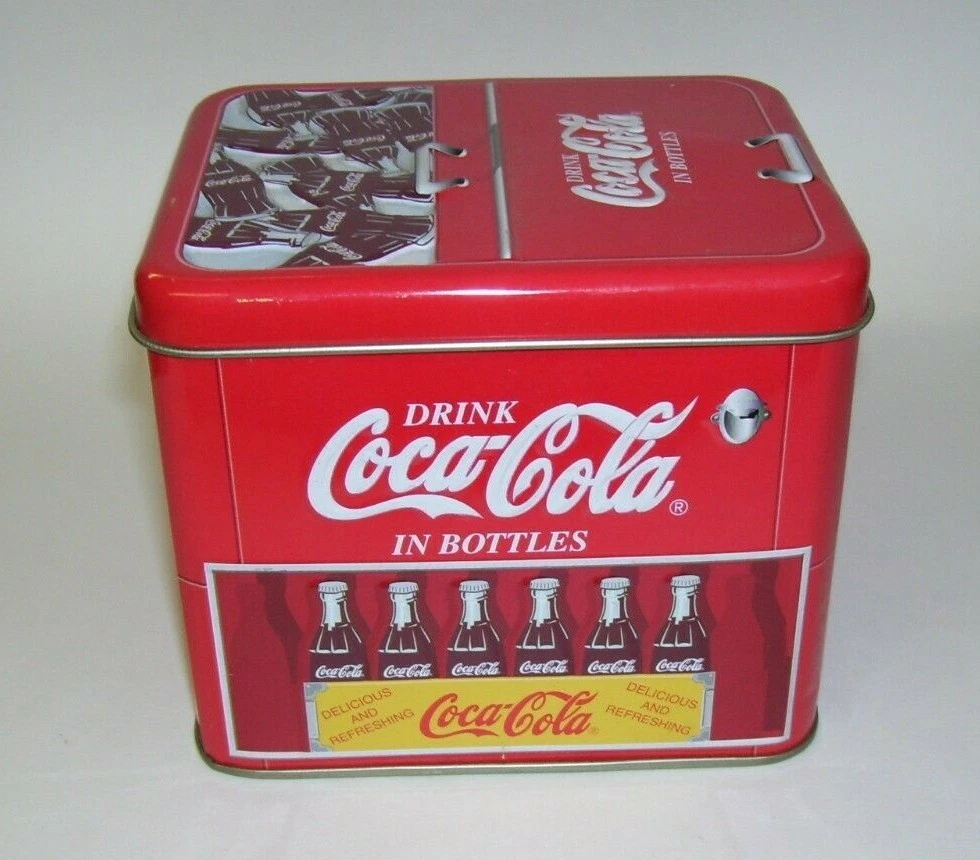
Coca-Cola produced collectible tins during the mid-1900s for promotional campaigns and product storage. These tins often feature the classic red and white logo with illustrations. Depending on rarity and condition, Coca-Cola tins can range from $30 to $100. Some limited editions or special event designs can be more valuable. Collectors appreciate them for both the brand history and visual appeal.
The Coca-Cola tins are popular because they represent one of the most recognized brands in the world. The metal used in these tins has preserved the bright colors for decades. Many collectors display them in glass cabinets or on shelves. Even vintage tins with minor scratches remain desirable. They are a classic example of mid-20th-century advertising and packaging.
Ideal Baking Powder Tin
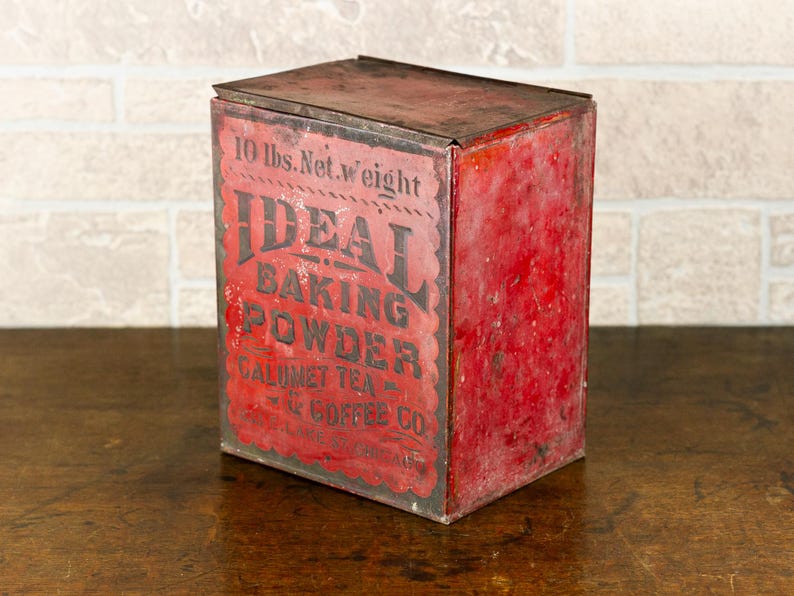
Ideal Baking Powder tins were created by the Calumet Tea and Coffee Company in the early 1900s. These tins often feature bold lettering and vintage graphics promoting baking powder. They were designed to protect the product and provide shelf appeal. Depending on design and condition, collectors may pay $50 to $150 for these tins. Original labels are especially important for value.
The vintage design of these tins makes them popular for display in kitchens or collections. They are often made of tinplate, which has preserved the artwork over time. Some tins have unique regional printing that increases their rarity. Collectors also enjoy the nostalgia these tins represent from early 20th-century cooking. They can be a colorful addition to any antique tin collection.
Barnum’s Animals Tin
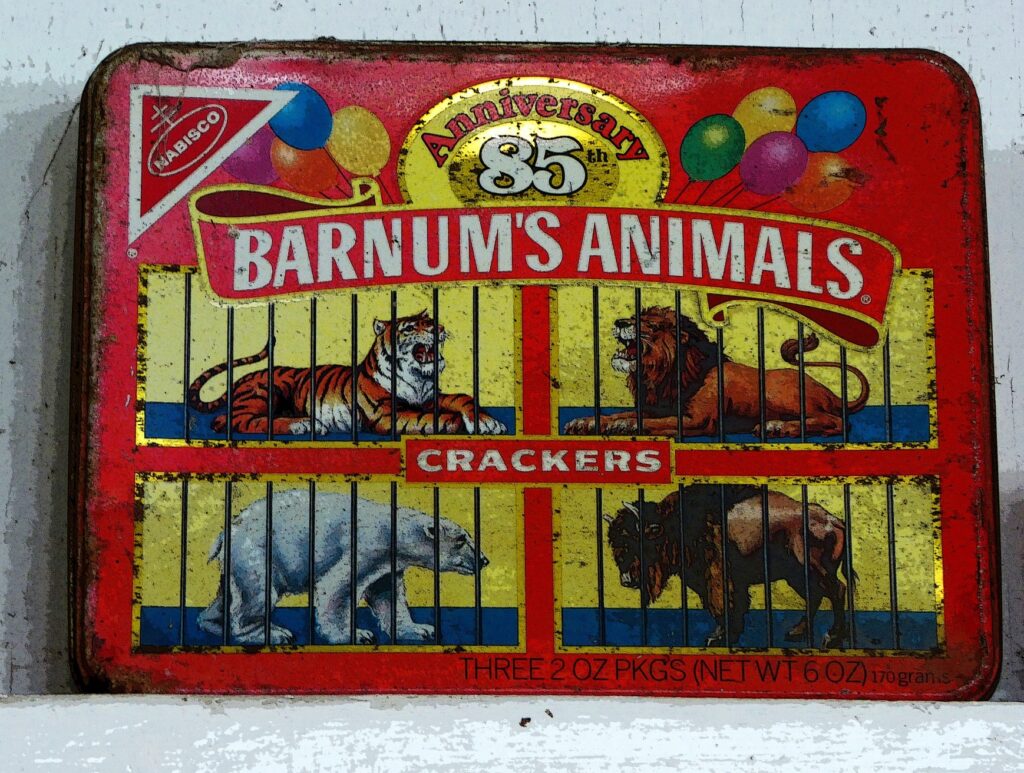
Barnum’s Animals, famous for animal crackers, produced collectible tins in the early 1900s. The tins feature illustrations of various animals on circus-themed backgrounds. They were used to store the crackers while also promoting the brand. Depending on condition and rarity, these tins can sell for $20 to $70. Original examples with intact lids are especially sought after.
Collectors enjoy Barnum’s tins for their playful designs and nostalgic value. The illustrations reflect early 20th-century circus advertising. Even tins with minor wear retain visual appeal. These tins are often part of themed collections. They make a charming addition to any display of vintage packaging.
Drost Cocoa Tin
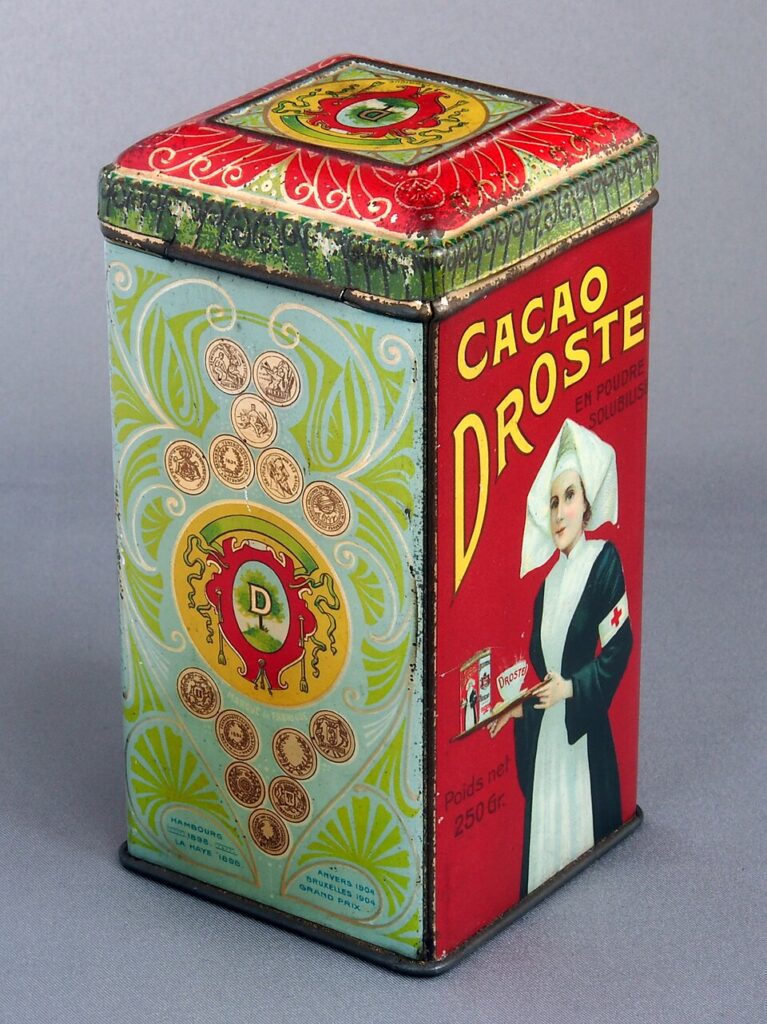
Drost Cocoa produced collectible tins in the early 1900s to store cocoa powder. The tins often feature elegant illustrations and vintage branding. Depending on condition, collectors may pay $30 to $90. Original labels and bright colors are especially valued. Drost tins are a popular find in antique shops for their historical charm.
Collectors appreciate these tins for both design and the story they tell about early chocolate packaging. The illustrations often include scenes of cocoa production or children drinking hot chocolate. Even older tins maintain visual appeal if the artwork is intact. They are lightweight and easy to display. Drost tins are a charming addition to any cocoa or food-related collection.
Prince Albert Tobacco Tin
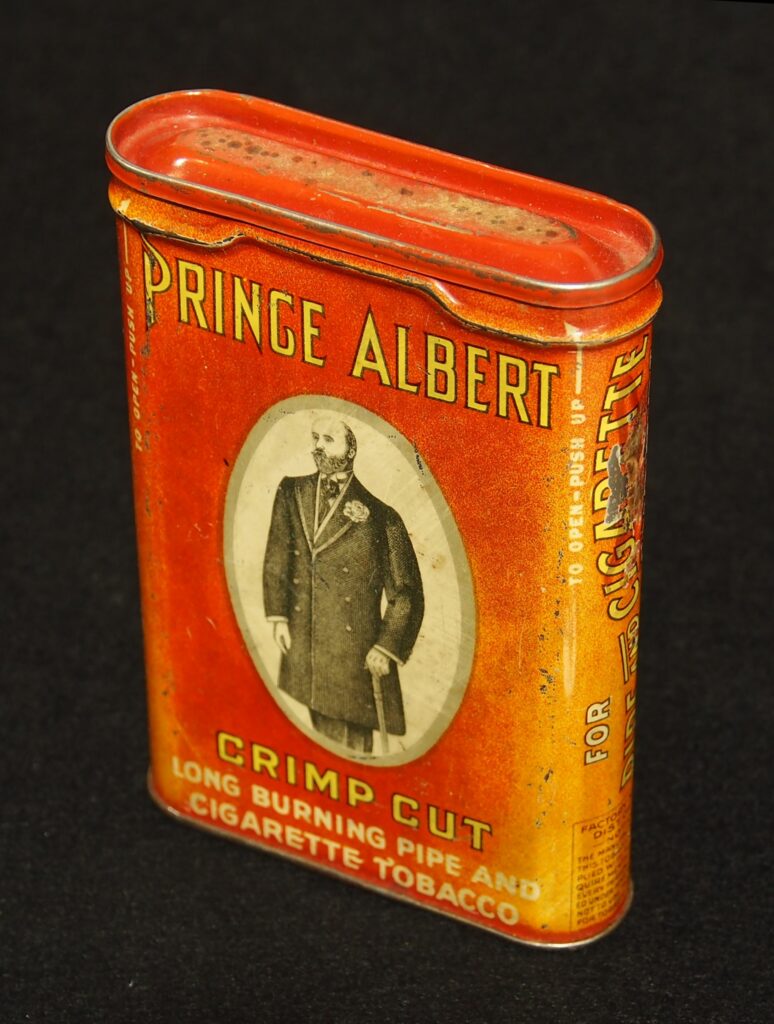
Prince Albert tobacco tins were produced by the American Tobacco Company in the early 1900s. The tins are recognizable by their red color and the portrait of Prince Albert on the lid. These tins were designed for storage and for keeping tobacco fresh. Depending on condition, vintage Prince Albert tins can sell for $20 to $80. Variations in design or special editions increase collector interest.
Collectors like these tins because they represent a well-known brand from American history. Some tins include embossed logos or advertising slogans that add character. Even small dents do not greatly reduce value if the artwork remains intact. The tins are often sought after as both collectibles and decorative pieces. Their compact size also makes them easy to display in collections.
Exploring antique shops often leads to discovering vintage tins that are both beautiful and historic. Each tin represents a piece of cultural and commercial history from its time.
This article originally appeared on Avocadu.
